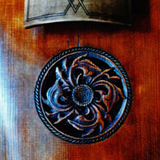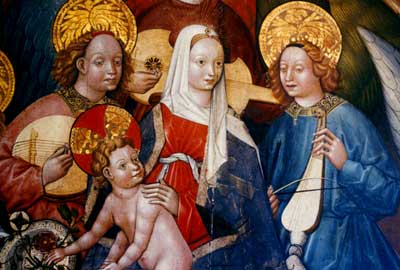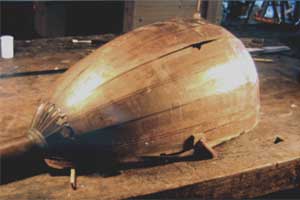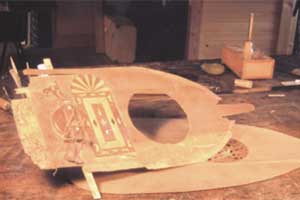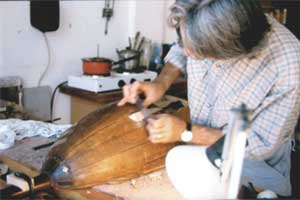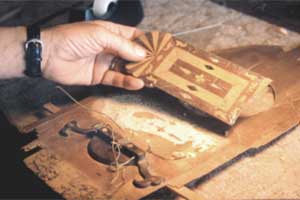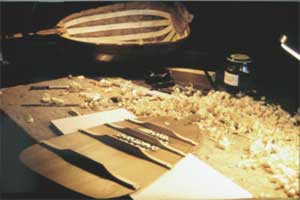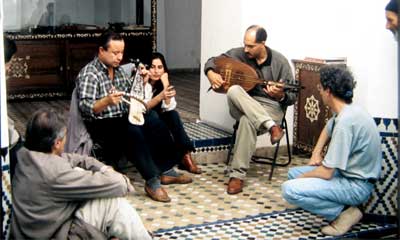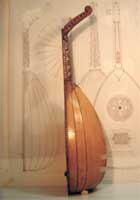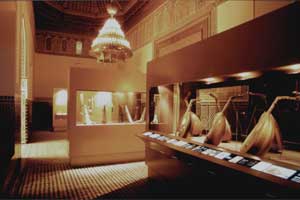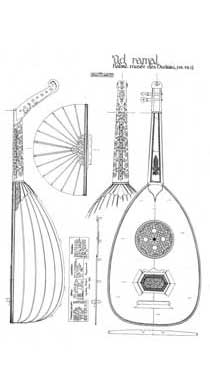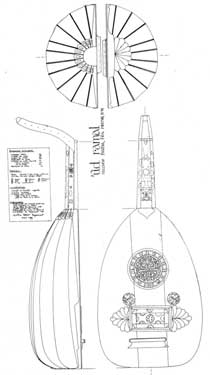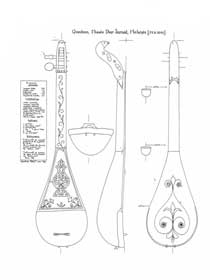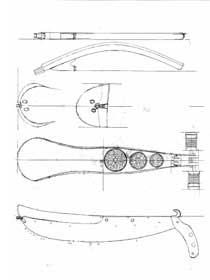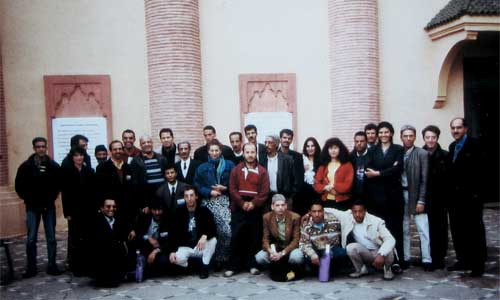Oriental
During the 12th and 13th centuries, al-Andalus was the melting pot of exchanges between the 3 monotheistic religions and there were deep mutual influences between them.
Some instruments, like the rebâb and the 4 stringed lute, 'ûd arbi, survived up until the middle of the 20th century in the Arab-Andalusian traditions. This is why it was so important to retrieve, to study, to value and to preserve the ancient knowledge and techniques of instrument making, along with the musical practices.
In 1999, my friend Khalid Belhaiba, luthier in Casablanca, amused by my interest in ancient instruments, gave me the remains of what had been an Arabian lute. In 2000, the restored lute was represented to Moroccan musicians and luthiers.
The restoration of this morish lute ('ûd Ramal) was an important work.
Fragments of the original strings remained attached to the bridge.
The carved ornate sound hole or ‘rose’, having been restored, was reinserted into a new soundboard made of cedar and the inlaid plate raqma completed.
On the 17th October, 2000, the first meeting in Marrakech, Omar Métioui discovered this ‘oud miraculously cured. He fell in love with it at first notes and performed the instrument in a concert the same evening.
One of the exhibition rooms at the museum Ben Youssef in Marrakech (Morocco).
In 2000 and 2003, the first meeting between Moroccan luthiers and European luthiers was organized by the museum Ben Youssef in Marrakech with proLyra association.
These studies were the objectof exhibitions at Royaumont, Marrakech and Casablanca, along with the publication of a catalogue. They were made possible by the organization ”1999, année du Maroc en France” (year of Morocco in France) and realized by the help of the Royaumont Foundation. |
